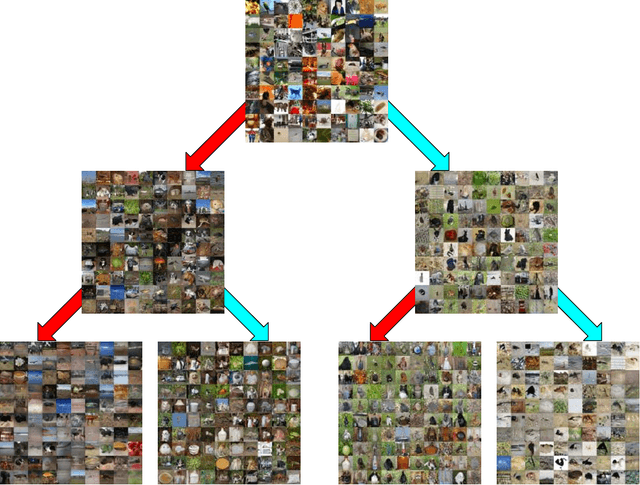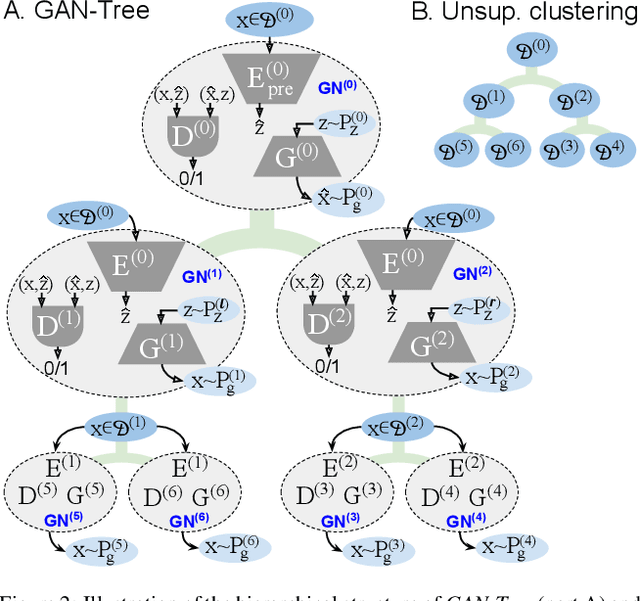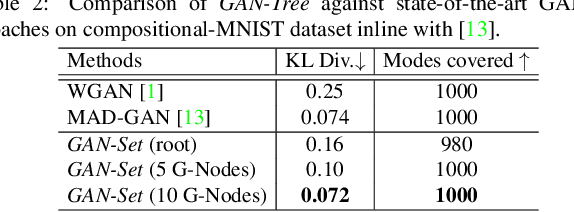GAN-Tree: An Incrementally Learned Hierarchical Generative Framework for Multi-Modal Data Distributions
Paper and Code
Sep 16, 2019



Despite the remarkable success of generative adversarial networks, their performance seems less impressive for diverse training sets, requiring learning of discontinuous mapping functions. Though multi-mode prior or multi-generator models have been proposed to alleviate this problem, such approaches may fail depending on the empirically chosen initial mode components. In contrast to such bottom-up approaches, we present GAN-Tree, which follows a hierarchical divisive strategy to address such discontinuous multi-modal data. Devoid of any assumption on the number of modes, GAN-Tree utilizes a novel mode-splitting algorithm to effectively split the parent mode to semantically cohesive children modes, facilitating unsupervised clustering. Further, it also enables incremental addition of new data modes to an already trained GAN-Tree, by updating only a single branch of the tree structure. As compared to prior approaches, the proposed framework offers a higher degree of flexibility in choosing a large variety of mutually exclusive and exhaustive tree nodes called GAN-Set. Extensive experiments on synthetic and natural image datasets including ImageNet demonstrate the superiority of GAN-Tree against the prior state-of-the-arts.
 Add to Chrome
Add to Chrome Add to Firefox
Add to Firefox Add to Edge
Add to Edge